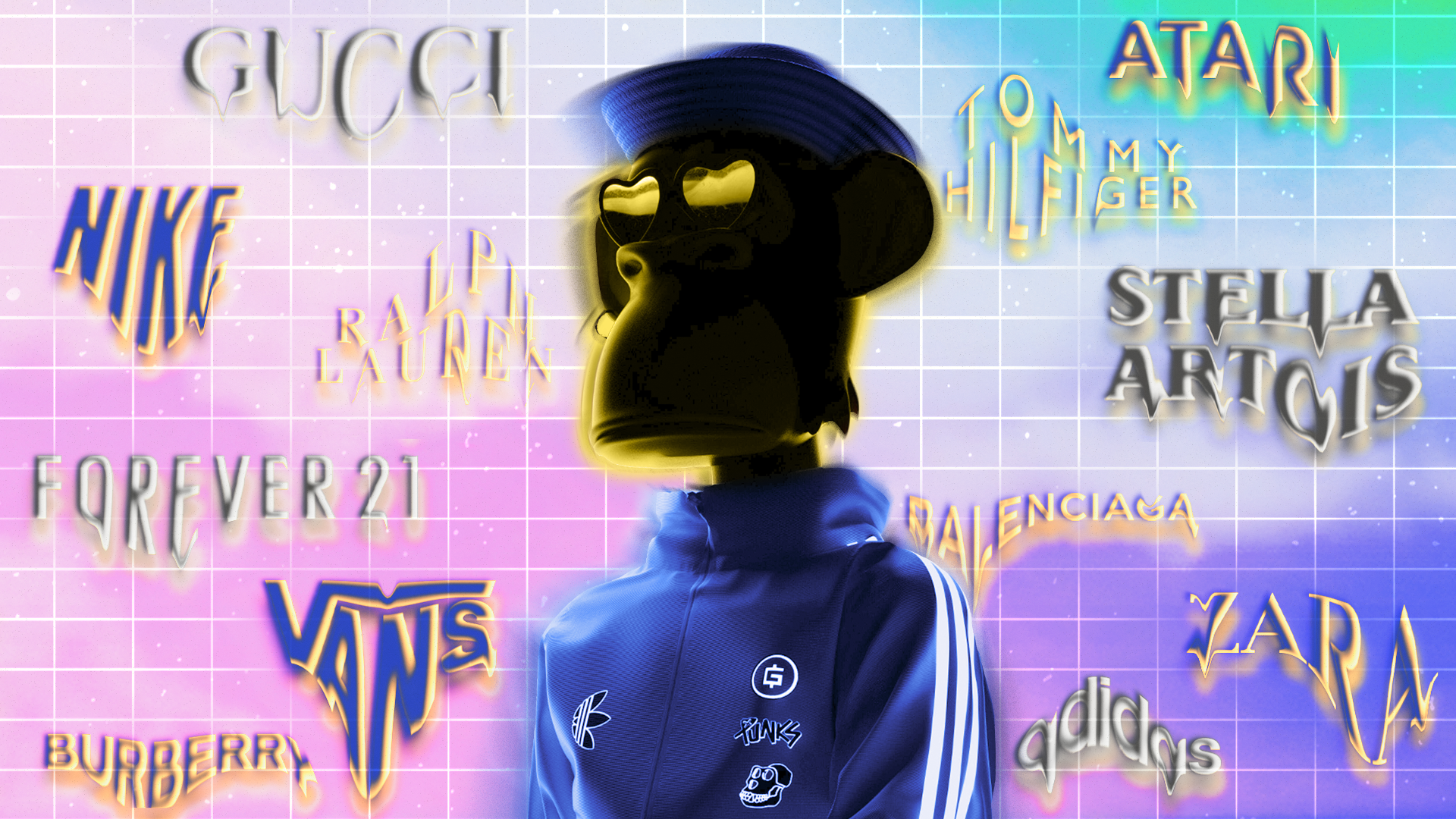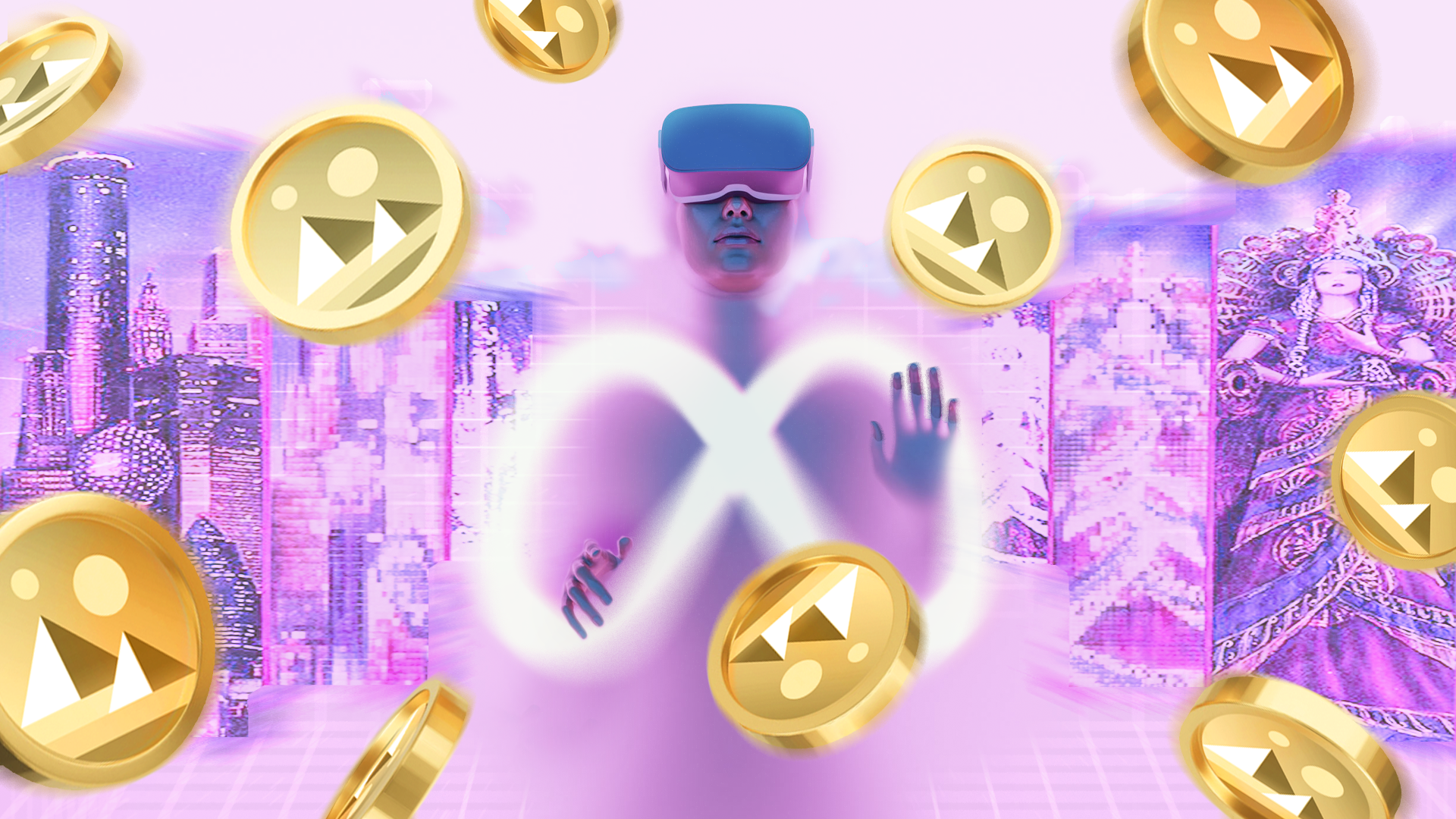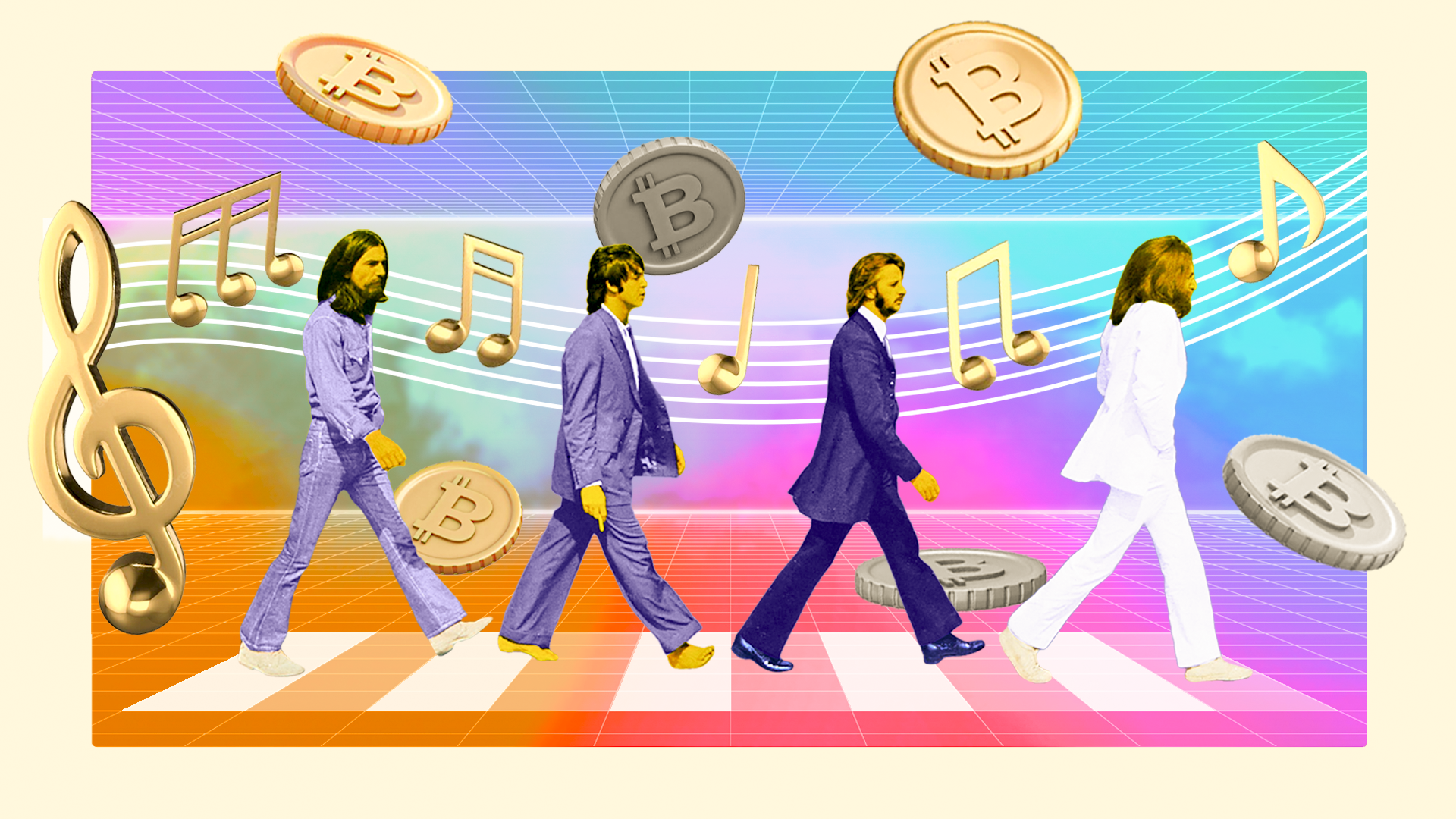Theta in Meta
Introduction
The future is quite an intriguing thing. Today’s technologies have already made the fantasies of “ancient” philosophers real, bringing them further than they could ever imagine. The metaverse is one such idea or phenomena. Neal Stephenson introduced the word “Metaverse” in his science-fiction novel “Snow Crash” 30 years ago (1992) to describe a world that people use to escape a dystopian reality, creating digital avatars of themselves and exploring the online world. This is exactly what is happening right now, and this concept has already been taken even further.
The fixed-line internet of the 1990s inspired many of us to purchase a personal computer, and the mobile internet allowed almost everyone to stay continuously connected. The metaverse goes further by placing everyone inside an “embodied,” “virtual,” or “3D” version of the internet on a nearly unending basis. It means we will constantly be “within” the internet, rather than merely having access to it, and within the billions of interconnected computers around us, rather than occasionally reaching for them, and alongside all other users in real-time.
Follow along to reach an understanding of what the metaverse is and where to find it, how big companies may find a new approach to their business, the evolution of video games, the opportunities to invest in new technologies, the future of the internet, and what is a reality nowadays.
Part I. Where the game ends and metaverse begins

While digging into this theme, one may perceive the metaverse as virtual reality. This is a common issue. In truth, virtual reality is merely a way to experience the metaverse. VR devices (like headsets) and VR games come in handy to explore the metaverse, though they aren’t the metaverse itself.
Sometimes the metaverse is described as a user-generated virtual world or virtual world platform, or an online multiplayer video game. This is also not a fully correct notion. We will play games in the metaverse, but those games in the metaverse are not the metaverse itself.
The metaverse is a network of interconnected experiences and applications, devices and products, tools and infrastructure that will surely change us.
You might be a bit confused:
“Alright then. Do you mean the metaverse is everything and nothing, and it’s too early to dive into?”
Don’t worry, we will show examples and explain in detail how it currently looks and where it is expected to reach in the near future. For now, we want you to understand the metaverse as a virtual space, the user of which is not just watching the content but is an actual part of this content, or inside the content, and can be or do anything they want.
…the metaverse as a virtual space, the user of which is not just watching the content but is an actual part of this content, or inside the content, and can be or do anything they want.
One of the Winklevoss brothers, Cameron, called it “Recreation of real-world online.” And the Meta leader, Mark Zuckerberg, sees the metaverse as “a virtual environment where you can be present with people in digital spaces, an embodied Internet that you’re inside of rather than just looking at.” Zuckerberg believes “that this is going to be the successor to the mobile Internet.”
Now for some examples. Let’s dive into the legendary Fortnite from the Epic Games company with over 250 million players, which has already grown from just a funny game-shooter into something phenomenal. Fortnite is developing the ability to offer its users beyond-gaming opportunities. For example, in April 2020, Travis Scott played the game online and brought together 12 million “visitors” all at once! (Video Of The Concert) That’s a safe and impressive way of holding such a huge event with fans being able to join and be in the center of the party from anywhere on the planet . Moreover, a whole sub-economy on Fortnite has emerged where “players” can build (and monetize) their own content. This approach shows the longer-term vision for the game. Its Creative Director, Donald Mustard says: “Fortnite isn’t the metaverse, but nothing is closer to the metaverse today in spirit and it is clear how the “game” might eventually underpin one.”
To sum up, Fortnite combines an online shooter and Battle Royale game, a virtual space to connect in real-time with other users to attend concerts or watch movies, a platform to make money creating own “rooms,” unique items or moves to share with other “players,” and last but not least,, Fortnite brings together multiple closed platforms. Your Counter-Strike gun skin, for example, could also be used to decorate a gun in Fortnite, and it’s even one of the few places where the intellectual properties of Marvel and DC intersect.
The idea of the metaverse might be overwhelming. Even though it really brings endless investment opportunities, we should be careful trusting our money to any of the related “meta” projects. Zet Fund offers its investment management service and consultancy, helping you to choose the most reliable and promising directions to earn. Taking advantage of new technologies, Zet Fund is open for worldwide investors with a starting investment balance of $10. Just choose one of two Zet Strategies and join the journey into the world of new investment opportunities by completing an easy application at zet.fund.
Part II. Value of virtual items
Do you think virtual reality will become as valuable as a physical one? The next generation will probably value digital items more than physical things. Of course, it’s currently hard for most people to understand, but let’s jump beyond the boundaries of the human mind and take a look at new investment and development opportunities.
Many people of the older generation have a different way of looking at things. For example, they can’t fully trust digital currency, since it’s crucial for them to feel the physical presence of money. Therefore, kids may often hear from their father something like: “We shouldn’t rely on digital banks since they don’t even have an office – they do not exist in our reality. It would be safer to keep your money under a pillow.”
This point of view is understandable. The human connection to tangible things is still strong. We’re only now beginning to understand the value of digital items, while our kids and grandchildren will value their originality recorded on the blockchain – something that can be shared but can’t be touched, only seen.
If the example of digital banks sounds weird now, try to understand that the AK-47 skin from the CS:GO computer game was sold for $776,000 and, as of today, the most expensive item in the game is the knife “Karambit | Case Hardened,” which has been estimated to be worth around $800,000. Some people already pay high prices for items they would never be able to touch or take for a walk in real life. Same with clothes. Gucci introduced a virtual dress for $10K. Right now, you have an opportunity to buy digital Nike sneakers so your avatar can “wear” them in the metaverse.
Yes! It’s already happening. People buy digital clothes to “wear” on Instagram and will never take them out for dinner. Many companies see a big future in the metaverse. For example, in December 2021, Nike acquired the RTFKT virtual shoe company that makes NFTs and sneakers “for the metaverse,” positioning RTFKT’s lightning bolt-style logo alongside its own iconic Swoosh, Jumpman, and Converse marks.

NFTs explained in a few words
To remain on the same wavelength, we should all understand what an NFT is and why it’s vital for the metaverse. The digital item and its owner are registered in a smart contract, named NFT (non-fungible token), which we have already discussed in detail *here*. For now, we should recall that an NFT tracks a virtual asset that you own (like a picture, video, wearables, or anything else digital) and records your ownership in the blockchain – the code that can’t be forged, stolen, or hacked. You do own your NFT and can sell it, destroy it, show or rent it. The difference with physical assets is that your virtual item exists on the screen, and you (or better say your Avatar) can use it only in a virtual world.
Decentraland as an example
If we combine NFT, metaverse and cryptocurrency, we get Decentraland, which is a virtual world divided into LAND Parcels of 16×16 meters each (about 17.5 yards). Each parcel is an NFT that can be bought. Why? To create anything you want, just like in the physical world. You may want to build a casino, organize an exhibition of NFT art or install a billboard – anything to attract other players with incentives to gain more income. You may be curious about the platform’s rewards? When entering the game, you may soon come across the local Marketplace where a nice robot will explain how everything works in their world:
“There is a thriving economy behind Decentraland and every day people buy and sell unique items. Items like Land parcels, wearable items, and reserved names. As more trading happens on the platform, it grows and moves faster. All sales, bids and other operations are transactions on the blockchain. Like all transactions, they require a small gas fee that is paid to the network of miners. The Marketplace charges a small fee over all transactions. This fee doesn’t go into anyone’s pocket. Instead, it gets burned like fuel to drive the platform’s development. Happy shopping!”
While exploring the Marketplace, you will find real-time stats showing the items on sale, their highest/lowest price, sales volume, and currency rates (Decentraland’s cryptocurrency MANA to EUR, USD, ETH and BTC).
The current picture of Decentraland (as well as its competitors) is primitive, but here we should cast our minds back to the beginning of the internet. The era of Web1.0 was the entire internet looking like Wikipedia, which lasted until 2004. There were no opportunities to buy anything, no social networks, and no familiar (normal) video content. From 2004 until now is the era of Web2.0. Socials (like Facebook and Instagram) and smartphones gather our data and sell advertisements while allowing everybody to create their own content. The coming Web3.0 will decentralize everything: financials with the help of cryptocurrencies, ownership – with NFTs and deals – with smart contracts. If you become a millionaire in “games” like Decentraland, you become a millionaire in real life as well, and so far we’ve only discussed projects that already exist. Many more will appear going forward.
In October 2021, CEO of Facebook, Mark Zuckerberg, renamed his company Meta and showcased its prospects. Just think about it. Facebook, with a market cap of over $900 billion and 3Q2021 revenue of almost $800 million, decided to change its name. Why does a successful company need a rebrand? Because they have decided to shift away from social media platforms, choosing instead the direction of the metaverse because “there is always more to build.” “Meta” translates to “beyond” in Greek. And the Meta company believes that “the defining quality of the metaverse will be a feeling of presence” with its users being able to socialize, work, learn, play, shop and create “like you are right there with another person or in another place.” Mark Zuckerberg, CEO of Meta, says: “I think we’re basically moving from being Facebook first as a company to being metaverse first.” Thus, “Meta” represents all his intentions, beliefs and plans for the future of the company and our society.
You may want to ask, “what’s the difference in practice?”
Well, you’d be right to be curious. Time for an example.
Many people describe commuting to the office as the most awful thing in their work life. What would you suggest to them? Stay on remote work forever? Well, OK. But how do we treat those who feel the need to have real meetings with their colleagues? Don’t worry. Facebook, sorry, Meta, has already shown the way. Zuckerberg intends to replace video chats with virtual meetings of the participants’ holograms, where you can even change the way you look however you see fit.
Let’s imagine you want to hang out with your friends after work (or during a break) but they’re far away on the opposite edge of the metropolis, or in a different city, or maybe country, or planet. Why not? We’re developing our imagination. Wherever they are, Meta can provide you with virtual space to play a game of tennis. Meta introduces more ways to experience a life of fitness. Jump into the metaverse and play basketball or try to “visit” a group cycling class. Maybe you want to train your boxing skills but your opponent is busy? Go ahead and show this AI what you’re made of! The opportunities are endless.
Eventually, we’ll be connected to the metaverse all the time, extending our senses of sight, sound, and touch, blending digital items into the physical world, or popping into fully immersive 3D environments whenever we want. This family of technologies is known collectively as eXtended Reality (XR). Follow us (Instagram, Twitter, Telegram) to satisfy your curiosity about related topics like Open Source and Web 3, which will appear soon!

Screenshot is taken from official Meta's YouTube chanel
Part III. Metaverse issues
Things we could barely even begin to dream about only a few years ago are now coming true, but first, all these currently existing metaverse platforms must face some challenges before they become worthy of the name. You may be able to help them, for example, by participating in code development. Decentraland, as well as most other similar platforms, is an open-source project, supported (and governed) by its users. We will reveal the power of “open source” in one of our next topics, so please let us know as soon as possible if this is something you would like to learn about.
The realistic worlds created by VR technologies provide a greater potential for overuse. Therefore, one of the metaverse problems might be people massively escaping into virtual reality, which may lead to self-isolation from society. As the futurist Ray Kurzweil predicted: “We will all become virtual humans.”
Virtual reality also allows users to create avatars of various forms. On the one hand, it’s a way to express yourself, on the other, avatars may affect self-awareness in the physical world. The influence of avatars on identity will one day almost certainly be studied but for now, we can only guess where it’s going to lead.
Another issue is that there is definitely a lack of tactual sensation in virtual reality. The good news, however, is that Teslasuit allows you to feel virtual objects. The bad news is that it costs about $20-30K, which might be reasonable for training the rescue team but too expensive just to “play games.” However, the first mobile phone introduced to the market in 1983 by Motorola measured about 30 cm (11 inches) and weighed about 1 kg (2.5 pounds). With its peak battery capacity of 30-minute talk time, the phone cost $3,995. Today, after almost 40 years, everyone has a phone and, usually, they cost way less. The high price of the tools (like Teslasuit) that will soon be common in the metaverse confirms that everything is only just beginning.
Next, what do you think about court practice in VR? How can we organize it? Nobody yet knows. For example, two teenagers in Russia were judged for blowing up the Department of Home Affairs, recreated in Minecraft. They were brought into a real court for their virtual actions that didn’t harm anyone. We can say they were judged for form, not the content. So, was this the right action from local authorities, or a silly overreaction?
The UAE Minister of State for Artificial Intelligence believes that new laws should be created to prevent people from committing crimes. The minister also claims that “the realistic nature of any metaverse that does come to fruition could allow people to be terrorized in ways that aren’t currently possible.” As a result, the minister proposed setting international safety standards for the metaverse that people must adhere to regardless of where they live.
Users also report cases of assault and sexual violation of their digital avatars. This is stoking consternation amongst legal experts confronted by new-age crimes that are not covered under existing laws. Most of the metaverse platforms allow you to mute other users and set personal boundaries like a shield on the avatar. However, this way, those committing crimes remain unpunished, while the users who faced the violation in the metaverse have to limit their avatars to ensure their safety.
Moreover, who is going to control the court system in VR? Do we need a new Department of Metaverse Affairs? There are many questions relating to this issue and, for now, they don’t interfere with the development of the metaverse. However, as soon as a virtual citizen commits a crime, we would need to find the answer.
Until that moment we have more urgent challenges. The metaverse would require decentralized data storage, which requires huge cloud resources. The technology works only when tens and hundreds of millions of users are involved in the process, which will require enormous server resources. Each user needs to be provided with a stable amount of frames that can be repainted in one second (FPS) from any point in the world, otherwise, the picture will be disturbed and won’t be perceived accurately by the human eye. If we’re discussing how people will “live” in VR, then it’s a crucial moment. We also need to support a constant transition from one platform to another (relating to the multiverse). This process requires an open code of each platform constantly interacting with each other. By the way, this will reduce the risk of monopolists, since it hardly seems realistic to create such a system alone. So, open-source is a solution, though such huge projects have so far never existed.
The last issue is quite an unlikely outcome, but still, what is going to happen if electricity disappears? Will communication/work/study/construction/Life in the metaverse be abruptly interrupted?
It can be easy to get carried away with the idea of the metaverse, but the reality is it hasn’t been built yet. The full vision of the metaverse is decades away. It requires extraordinary technical advancements (we are far from being able to produce shared, persistent simulations for millions of users synchronized in real-time), and perhaps regulatory involvement too. In addition, it will require overhauls in business policies and changes to consumer behavior.
Besides, even the most detailed understanding of electricity and mobile internet (at the dawn of their time) didn’t make clear which specific secondary innovations and inventions they required to achieve mass adoption and change the world. And how they would change the world was almost entirely unknown. We don’t know exactly where the metaverse and its related technologies will lead and how it will impact our society. Many companies are trying to create the best virtual environment, though it’s still important to keep the metaverse decentralized and not to get surrounded by continuous advertisements at every corner and uncontrolled transfer of personal data to the managing companies.
If you followed us carefully, you might have noticed that there are many opportunities with the metaverse, and alsomany issues. Once again, it’s only the beginning. People are often afraid of breakthrough technologies. However, it’s important to understand that VR, NFT and Metaverse are just tools. We shouldn’t be scared of loading into the Matrix, we should fear the lack of meaning.
Part IV. Investment opportunities in the metaverse
Since we are on the verge of the future and have already become familiar with its “tools,” let’s find an approach to earn using this knowledge! We’ll share ideas giving you the chance to increase your income and support the development of new technologies.
The metaverse market is poised for drastic and swift growth, driven by increased adoption from various companies. The market is hard to accurately predict in terms of numbers, except all analysts agree it will grow. For example, the Artillery Intelligence company report states that corporate VR market size was expected to surge more than fivefold from $829 million in 2018 to $4.3 billion in 2023. However, in 2021, experts from the same company released an updated analysis, according to which the market size already stood at $4.48 billion in 2020 and is expected to grow to over $22 billion by 2025. According to another company (Fortune Business Insights) report, the VR market was $4.42 billion in 2020, and they predict its growth of up to $84.09 billion by 2028, at a compound annual growth rate (CAGR) of 44.8% in the forecasted period.
Today sees the launch of a new tool called the Metaverse Index (MVI), which tracks the metaverse projects and their tokens. The new Metaverse Index will follow the leading tokens and projects in the NFT and virtual metaverse space. The MVI aims to provide exposure to the top assets in the burgeoning digital art, collectibles, and virtual metaverse scene. There is Enjin Coin, Decentraland, SAND, Axie Infinity and RedFOX Labs among metaverse and NFT projects listed in the index. From its launch in April 2021, this index increased in price from $95 to its maximum of $367 in November, and is currently fluctuating in the range of $36-42 in July 2022, with a daily trading volume of over $50 thousand. As of mid-July, the fully diluted MVI market cap on CoinMarketCap almost reached $1.5million.
Besides the index, we can also follow certain cryptocurrencies, for example, Decentraland’s MANA, which occupies about 12% exposure in the Index or ENJ (almost 20%).
The development of the metaverse opens endless opportunities for investment because not just one company will benefit from it. Beside crypto projects, we’ve already taken a look at several companies striving to participate in the metaverse, even if their core business is not related. Among them were Nike, Gucci, Meta, and Epic Games. There are more still. Even National Geographic announced they would expand their activities in the metaverse.
This means we don’t have to be lucky and put our whole budget into one winning stock. Instead, it’s a much better idea to build a diversified portfolio of companies, which will include crypto companies, classic companies engaged in metaverse projects, as well as third-party companies, the business of which will one way or another influence, or be influenced by, the development of the metaverse. This way you’re hedging your bets, and at the end of the day, they could all end up being crucial parts of the metaverse. Since we’ve already looked at crypto companies, let’s now review five classic companies investing in the public stock market.
First on the list is Unity Software (NYSE: U) who recently acquired Weta Digital’s tech division, which is the visual effects studio behind huge films like Avatar and Lord of the Rings Their experience in 3D visualization, combined with Unity software, could offer the perfect building blocks for the metaverse. The second company is Snapchat (NYSE: SNAP) since they are focused on innovations and are already preparing its users for the metaverse by normalizing virtual and augmented experiences. All the company’s technologies and initiatives will play an important role in the development of the metaverse. Then there’s Matterport (NASDAQ: MTTR), which specializes in digitizing the real world. There is a huge opportunity to apply their business in the metaverse. Investing in this company might be riskier than the others, as it’s a much smaller company, but they have the potential for amazing growth. Disney (NYSE: DIS) – one of the biggest companies in the world that still has an opportunity to grow. Disney could create a full-blown Disneyland metaverse including all the characters and movies they own. And, of course, Meta (NYSE ARCA: META) who can invest as much money as they want in the metaverse and get it right. Meta develops things fast and has already introduced Horizon, which allows you to create places to hang out with friends and also work from the metaverse.
Please note that these are only a few “classic companies” to give you something to think about, and remember, it’s always necessary to conduct your own research before investing your money.
The idea of the metaverse looks exciting for some people and scares others. Investors look for new opportunities and operate with data, trying to predict how the company’s actions will influence its cost in the market. Since the metaverse is a startup for most companies, it can be related to higher investment risks. Moreover, while betting money, remember that there are issues concerning the metaverse that still need to be resolved. Nevertheless, smart-organized startups always grow faster and make more money for their investors.
The idea of the metaverse might be overwhelming. Even though it really brings endless investment opportunities, we should be careful trusting our money to any of the related “meta” projects. Zet Fund offers its investment management service and consultancy, helping you to choose the most reliable and promising directions to earn. Taking advantage of new technologies, Zet Fund is open for worldwide investors with a starting investment balance of $10. Just choose one of two Zet Strategies and join the journey into the world of new investment opportunities by completing an easy application at zet.fund.
Part V. Theta in Meta
There are still many questions to ask. One of them that we haven’t yet discussed is the opposite side to living in the metaverse. Death. Take it easy. Let’s say death is an inevitable issue after a deep dive into this theme. Here are two points; the first is the death of a person and the second is the “death” of an avatar.
If the owner dies, what happens to their account? With the new technologies, human-like AI can already imitate people’s behavior and voice. Lil Miquela has over 3 million followers on Instagram, a YouTube channel, hit songs with millions of streams and collaborations with major brands like Calvin Klein, Prada and Samsung. She was on Time magazine’s list of the 25 most influential people on the internet in 2018. And finally, she is not a human. She is a character made by a team of writers and graphic artists in Los Angeles. However, that makes no difference to her audience. People leave comments under her posts and trust her since Lil Miquela behaves like a human expressing her own opinion.
Getting back on topic, AI could clone a real person and exist using their identity in a virtual world. But why do we need this technology after somebody dies? For example, to apply the person’s skills. Kobe Bryant, an American professional basketball player who died in a helicopter crash in January 2020, could have continued contributing to basketball by training the younger generation and, therefore, kept supporting his family. Of course, it wouldn’t have been Kobe anymore, but AI could have imitated his moves and speech.
Furthermore, we could also establish a memorial museum in the metaverse, where prominent people from the physical world speak about their lives and share their experiences with visitors firsthand. Although the idea may sound weird and even unethical, in the case of its realization, death no longer means the suspension of a person’s lifework.
When the initial owner of the avatar can no longer (or doesn’t want to) manage the account, AI could also take on the human duties. Therefore, the established “metabusiness” would run automatically. But who is going to take the income if the person disappears? Should someone inherit the person’s account or perhaps only part of the rights to manage the avatar and activities inside the metaverse? Just to recall, the avatar can be a millionaire, which makes the owner a millionaire in the real world as well. And the initial owner doesn’t have to share complete access to the account with only one person. Instead, they might want to divide their assets between several people. One will receive a land parcel and others – pieces of NFT art.
The other issue is when the owner is fine but their avatar is lost. We all want to ensure the complete security of our accounts. In this case, we should definitely keep the password safe otherwise the avatar might be lost forever and there will no longer be anything that can be done. Same if the account is stolen, deleted, or banned, for example. What then?
First of all, we could develop a technology of “life insurance” for avatars in the metaverse. After the insured accident is verified, payment will be received but the account will no longer be available, which will force us to create a new one. The creation of a new avatar with a new background and “interests,” intersects with the idea of regeneration.
Does the metaverse bring us closer to digital immortality? We will soon see. Share your thoughts in the comments section.

Summary
After all that we discussed today, we can claim that the metaverse will revolutionize nearly every industry and function. In addition, this future will stimulate the creation of new industries, marketplaces and resources, as well as skills, professions, and certifications. The collective value of these changes will be in the trillions.
Today’s metaverse is already demonstrating new ways to interact with each other: informal socializing, joint games, attending virtual events and art exhibitions, virtual fashion, business communication, and virtual representation of business or government (e.g. Domino’s pizza is available to order in Decentraland, and the digital diplomatic embassy of Barbados was established in Decentraland as well). Another area for the future is the corporate metaverse. This represents virtual simulators or virtual environments to train and prepare specialists in the fields of engineering, medicine, cinema and space exploration.
Now, let’s carry out an interesting exercise. Switch on your imagination and envision how you want to live in the metaverse. What do you think it will look like? How will human behavior change in such an environment? What will be the effect on human relationships and reality perception? Try to capture what you see when you find yourself standing in the center of the metaverse. It would be interesting to read your thoughts, so please share them in the comments below. Then set a notification “my ideal metaverse” for 2032 in your calendar app and return back to the comments in 10 years. Let’s see together how what you imagined will be different from what future humans will actually have.
See you in our next project!
Credentials:
Illustrator – Maryana (tg: @maryana_chelovek)
Copywriter – Kirill (tg: @MysteriousLeo)
Editor – Damo Jackson
Project Coordinator – Artem Kopylskiy
Producer – Roman Gorbunov




